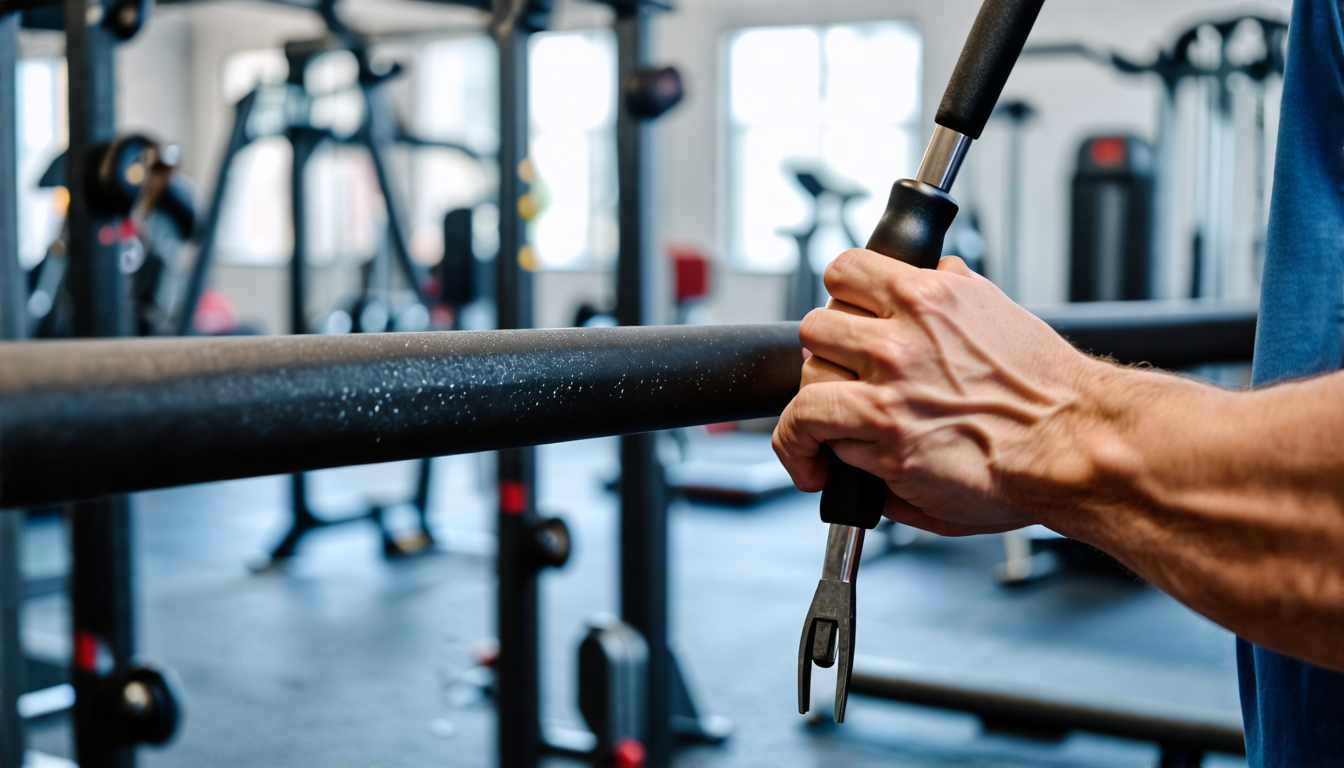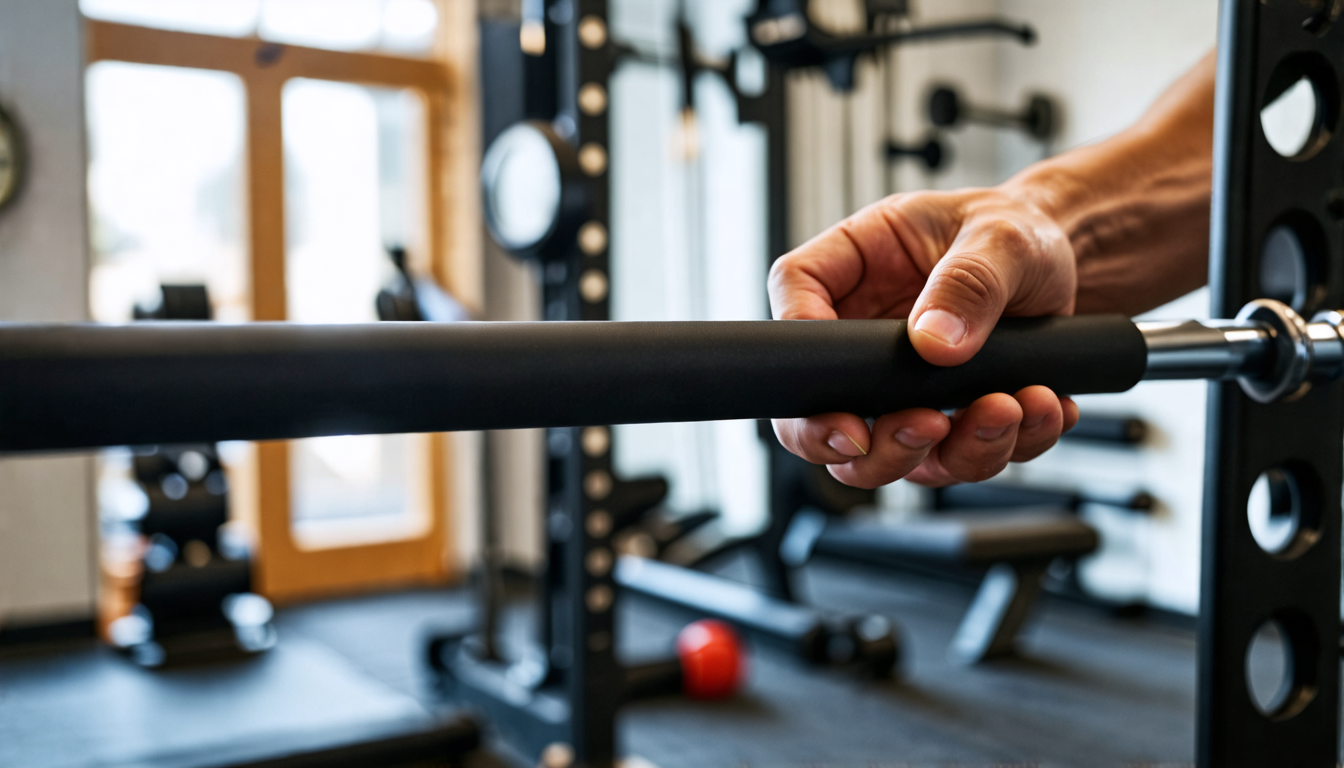A home fitness bar can be a cornerstone of your workout routine, offering a versatile range of exercises to target various muscle groups. With the rise of home fitness trends, ensuring the stability of your fitness bar is not just a matter of performance but also safety. An unstable fitness bar can pose significant risks, from minor inconveniences like a wobbly hold to severe injuries caused by unexpected falls or slips. Therefore, understanding the importance of regular stability checks is crucial for any fitness enthusiast. Performing these checks can prevent potential injuries, increase the longevity of your equipment, and ensure a smooth, effective workout routine. By integrating regular stability checks into your fitness regimen, you reap both the physical benefits of consistent training and the peace of mind that comes from a secure workout environment. This article will guide you through how often you should check your fitness bar’s stability, taking into account various factors such as usage frequency, bar type, and its location, and whether you should consider professional maintenance or can manage with DIY checks.
Understanding the Importance of Fitness Bar Stability
Overview of Fitness Bar Usage
Fitness bars, often referred to as pull-up bars, chin-up bars, or exercise bars, are versatile pieces of equipment used in home gyms around the world. They serve multiple purposes including pull-ups, chin-ups, hanging leg raises, and anchoring resistance bands. Such flexibility makes them a valuable asset for those seeking to improve upper body strength, core stability, and overall fitness from the comfort of their homes. Given their wide range of uses, it’s crucial to ensure that your fitness bar remains stable and secure to avoid potential accidents and injuries.
Risks Associated with Unstable Fitness Bars
The importance of a stable fitness bar cannot be overstated. An unstable fitness bar can lead to several potential risks that can undermine your workout routine and expose you to serious injury. Here are some risks associated with unstable fitness bars:
- Injury Risks: An unstable or improperly mounted fitness bar can slip or collapse during use. This can cause severe injuries including but not limited to strains, sprains, fractures, and even head injuries if you fall.
- Equipment Damage: Continuous usage of an unstable fitness bar could lead to wear and tear not just on the bar itself, but also on the mounting points, whether on a doorframe, walls, or ceiling. Over time, this can compromise the integrity of the bar and the mounting area, leading to a potential failure during use.
- Decreased Workout Efficiency: When you’re constantly worried about the stability of your fitness bar, it detracts from your focus and overall workout effectiveness. Confidence in your equipment is paramount to ensuring a safe and productive fitness regime.
Benefits of Regular Stability Checks
Conducting regular stability checks on your fitness bar brings a multitude of benefits that enhance both your safety and workout efficiency. Regular checks can quickly identify any issues related to the bar’s stability and allow for timely intervention. Here are some key benefits of regular stability checks:
- Enhanced Safety: Regular inspections ensure that the bar remains securely attached and capable of handling your weight and workout intensity. This significantly minimizes the risk of unexpected accidents.
- Prolonged Equipment Life: By identifying and addressing any stability issues early, you can prevent extensive damage to both the bar and the mounting points. This proactive maintenance extends the lifespan of your equipment.
- Improved Workout Confidence: Knowing that your fitness bar is secure allows you to focus entirely on your exercise regimen without hesitation or fear of equipment failure. This confidence translates into more effective and enjoyable workouts.
Given these considerable benefits, it’s clear that checking the stability of your fitness bar should be a regular aspect of your home fitness routine. Understanding when and how to perform these checks is crucial for maintaining a safe and efficient workout environment.

Recommended Frequency for Stability Checks
Ensuring the stability of your fitness bar is crucial for your safety, especially when engaging in home fitness routines. The frequency at which you should check the stability of your fitness bar can vary based on several factors. Here, we will explore the primary considerations and provide a guide to help you maintain a safe and effective home fitness environment.
Factors Influencing Check Frequency
Usage
The more frequently you use your fitness bar, the more often you should check its stability. Intense workouts, especially those involving heavy lifting or dynamic movements, can put more strain on the bar and its mounting points. For users who engage in daily workouts, it is advisable to perform a quick stability check before each session.
Bar Type
The type of fitness bar you are using can also impact how often you need to check it. For instance, adjustable bars with multiple settings or attachments might require more frequent checks than fixed bars. If the bar has any moving parts or is designed to be portable, you should check it more regularly to ensure it remains securely assembled.
Location
The location of your fitness bar installation can influence how stable it remains over time. Bars mounted on concrete walls or sturdy wooden beams might require fewer checks compared to those installed on drywall or less stable surfaces. Environmental factors such as humidity and temperature changes can also affect the stability of your fitness bar over time.
Step-by-Step Guide to Performing a Stability Check
Regular stability checks are essential to ensure your fitness bar is safe to use, particularly in a home fitness setting. Follow these steps to perform a thorough check:
- Visual Inspection: Start by visually inspecting the fitness bar and its mounting points. Look for any visible signs of wear, rust, or damage. Pay close attention to screws, bolts, and any welds.
- Tighten Screws and Bolts: Use the appropriate tools to tighten all screws, bolts, and fasteners. Even if they do not appear loose, it is good practice to ensure they are securely attached.
- Check for Movement: Gently apply pressure to the bar in various directions. It should not wobble or shift. If you notice any movement, investigate the cause and take corrective action.
- Assess Structural Integrity: Inspect the surrounding structure where the bar is mounted. Ensure that the wall or support beams are in good condition and capable of supporting the bar.
- Test Weight Capacity: Gradually apply weight to the bar, starting with lighter loads and progressively adding more. Ensure that the bar and its mounting do not show signs of strain or instability.
- Evaluate Attachments: If your fitness bar has any attachments (like pull-up assists or resistance bands), check that these are also secure and in good condition.
By following these steps, you can ensure that your fitness bar remains stable and secure, reducing the risk of injury during your home workouts.
Professional Maintenance vs. DIY Checks
When it comes to maintaining the stability of your fitness bar, there are advantages to both professional maintenance and DIY checks. Understanding which method suits your needs can help you keep your home fitness equipment in top condition.
Professional Maintenance
Hiring a professional to check your fitness bar can provide peace of mind, knowing that an experienced technician has assessed its stability. Professionals can identify potential issues that you may overlook and offer expert advice on repairs or upgrades. They can also provide documentation of their inspections, which can be useful for ensuring compliance with any home insurance requirements or warranties.
Professional maintenance is particularly beneficial for complex installations or commercial-grade equipment. Scheduling regular professional inspections annually or bi-annually can complement your DIY checks, ensuring comprehensive oversight of your fitness bar’s condition.
DIY Checks
Conducting your own stability checks is a cost-effective approach and allows for more frequent inspections. Since you are the primary user, you can quickly address minor issues as they arise. DIY checks are straightforward and can often be integrated seamlessly into your workout routine.
However, DIY checks do come with some limitations. Without professional training, you might miss subtle signs of wear or potential risks. Make sure to educate yourself on the specific requirements of your fitness bar and follow any manufacturer guidelines. If you are ever in doubt, it is wise to consult a professional.
Ultimately, combining both professional maintenance and regular DIY checks can provide a balanced approach. This ensures that your fitness bar remains safe and effective, allowing you to focus on achieving your home fitness goals without worry.
In conclusion, the stability of your home fitness bar is a crucial aspect of maintaining a safe and effective workout environment. Given the rigorous nature of exercises involving fitness bars, regular stability checks are essential to prevent accidents and ensure that you can focus on achieving your fitness goals without unnecessary distractions. The risks associated with an unstable fitness bar, such as injuries from falls or equipment failure, underline the importance of consistent maintenance.
The frequency of these stability checks largely depends on various factors including the intensity and frequency of your workouts, the type and condition of your fitness bar, and its installation location. Generally, a bi-weekly to monthly check is advisable for most home fitness bars, but high-usage scenarios may require more frequent assessments. Performing a stability check involves a systematic review of the bar’s fastening points, attachments, and overall structural integrity. This can usually be done DIY-style with basic tools and a checklist, though professional maintenance services are also an option for those who prefer expert assurance.
By integrating regular stability checks into your fitness routine, you not only enhance the safety of your workout space but also extend the lifespan of your equipment. This proactive approach can prevent minor issues from escalating into major problems, ultimately supporting a consistent and injury-free fitness journey.

